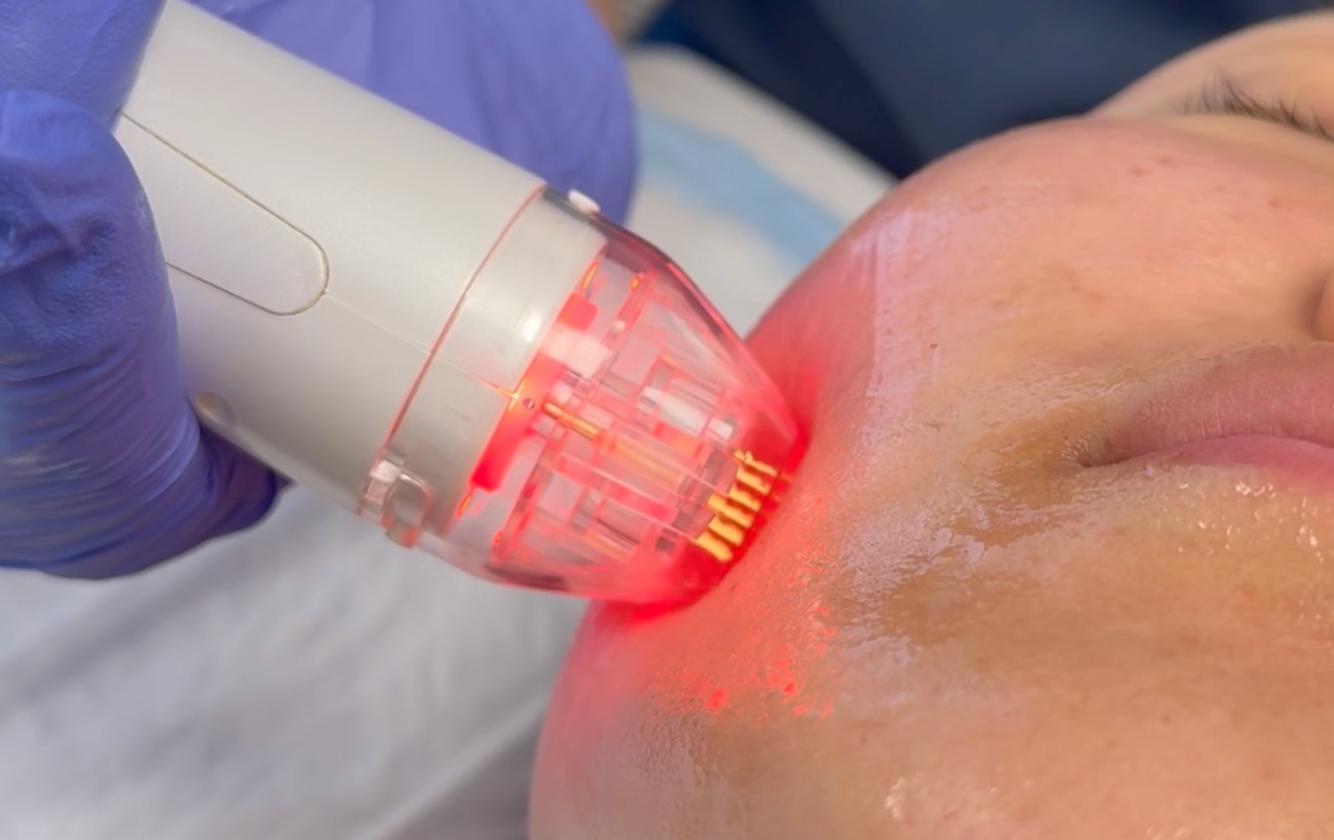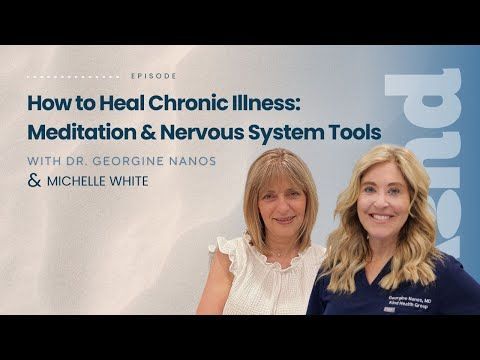Why Most Skin Treatments Are Just Symptom Management
September 10, 2025
When Expensive Skincare Stops Working

In this article, you'll discover:
- Why Sarah spent $8,000 on treatments that didn't work - and the fundamental difference between symptom management and actual problem solving
- The science behind why your expensive skincare stopped working and how collagen production changes from age 20 to 45
- How Vivace RF microneedling creates thermal zones that keep producing new collagen for months after treatment
- Why timing matters when combining treatments - and how CoolPeel optimizes healing instead of competing with the repair process
- What happened when Sarah finally understood she was "fixing what's broken instead of just covering it up"
___________
Three different women asked me the exact same thing: "How does this actually work, and why should I believe it's different from everything else I've tried?"
I get it. Sarah had already spent eight thousand dollars on various skin treatments over the past two years. Nothing worked the way it was supposed to. She was skeptical, frustrated, and honestly a little pissed off at the entire aesthetics industry.
"Everyone promises amazing results," she said. "Then I look exactly the same three months later."
So I sat down with her and drew it out on paper. Sometimes you need to see what's actually happening inside your skin to understand why most treatments barely scratch the surface.
Your skin at 20 was producing collagen like a factory running at full capacity. Plump, firm, bouncy. Every cell turning over quickly, replacing damaged ones with fresh, healthy tissue. Your skin could repair itself overnight.
By 45, that factory is running at about 75% capacity. Collagen production has been dropping 1% every year since your twenties. The cellular turnover that used to happen in 28 days now takes 45 days or longer. Years of sun damage have accumulated in layers that no cream can penetrate.
This is why your expensive moisturizer stopped working. It was never designed to fix structural problems.
Sarah had tried microneedling at a spa. But regular microneedling without radiofrequency only creates surface-level stimulation. Like knocking gently on a door instead of actually walking into the room.
She'd also done a series of chemical peels that burned off the top layer of damaged skin. Her face was red and peeling for weeks each time. The results lasted maybe six weeks before new damage appeared to replace what had been removed.
"I felt like I was just managing symptoms," she said. "Never actually fixing anything."
That's exactly right. Most aesthetic treatments are symptom management, not problem solving.
Here's where the Vivace RF microneedling changes everything. Those gold-plated needles deliver radiofrequency energy directly into the deeper layers of your skin. Not surface stimulation - actual remodeling of the structural foundation.
The radiofrequency heats tissue to very specific temperatures that wake up fibroblasts. Those are the cells that produce collagen, elastin, and hyaluronic acid. We're basically telling sleeping cells to get back to work.
But here's the part that blew Sarah's mind: the heating creates thermal zones that keep working for months after treatment. Your body doesn't just heal from the microneedling - it continues producing new collagen long after you leave our office.
Then we immediately follow with CoolPeel laser while your skin is in this activated repair state. Traditional CO2 lasers basically burn off layers of skin and require weeks of hiding at home. CoolPeel uses fractional technology to remove damaged surface layers with minimal thermal damage to surrounding tissue.
Think of it like selectively editing a photograph instead of burning the whole thing and starting over.
The timing is everything. Your skin is already primed for healing when we optimize the surface environment. Instead of competing processes, they amplify each other.
Sarah was quiet for a long time after I explained all this. Finally she said, "So you're actually fixing what's broken instead of just covering it up."
The treatment felt nothing like her previous experiences. No burning, no weeks of hiding, no wondering if it was actually working. She had some pinkness for two days, like a mild sunburn that faded quickly.
Three weeks later, her husband asked if she'd been on vacation. Her skin looked rested, radiant, alive. But more importantly, she felt confident about her reflection for the first time in years.
"I'm not constantly checking mirrors anymore," she told me. "I'm just living my life."
The science matters because it explains why some treatments create lasting change while others just waste your time and money. When you understand what's actually happening to your skin, you can make smart decisions about how to address it.

Meet the Author
You might also enjoy:

In this enlightening conversation, Dr. Georgine Nanos and Dr. Melinda Silva delve into the critical topics of women's health, hormone balance, and the evolving understanding of aging. They discuss the recent FDA changes regarding hormone therapy, the systemic issues in women's healthcare, and the importance of informed choices. Dr. Silva shares her personal journey from traditional medicine to hormone therapy, emphasizing the need for comprehensive care and the significance of balancing hormones. The discussion also highlights the empowerment of women in midlife, the role of strength training, and the importance of self-recognition and support among women.

Sabrina Falquier started crying at a medical conference in Napa. Not because something went wrong, but because something finally felt right. After years of seeing 18 patients a day in 15-minute slots, checking all the boxes of a successful medical career while feeling like something was missing, she found herself at Healthy Kitchens, Healthy Lives—a collaboration between Harvard School of Public Health and the Culinary Institute of America. The keynote speaker started talking, and tears came. One shoulder whispered all the possibilities. The other shoulder reminded her of all the reasons she couldn't pursue them. By day two and a half, she realized something that changed everything: her current employer was just that—her current employer. Not her destiny. Now triple board-certified in internal medicine, culinary medicine, and lifestyle medicine, Sabrina has built a career teaching medical students, consulting with community organizations like Olivewood Gardens, and showing people that the most powerful medicine might already be sitting in their pantry. This conversation wanders through the deeply personal terrain of leaving the medical highway for the frontage road, the science behind why plants matter so much, and the quiet courage it takes to listen when something inside you says "there has to be more than this." Key Moments & Takeaways 00:00 - 07:03 | The Conference That Changed Everything Sabrina shares the moment she knew she had to leave traditional primary care. Spoiler: it involved crying at a medical conference and realizing her employer wasn't her destiny. 07:03 - 15:22 | What Actually Is Culinary Medicine The definition that matters: using food and nutrition to prevent and treat disease through hands-on learning. Medical students cooking in kitchens. Communities learning that canned tomatoes still count. Evidence-based nutrition that doesn't require a Whole Foods budget. 1 5:22 - 24:36 | The Plant Kingdom Revolution Why plants matter beyond fiber and nutrients. Phytochemicals, polyphenols, and the compounds that actually make your cells work better. The science behind eating the rainbow (and no, Skittles don't count). 24:36 - 32:15 | Teaching the Next Generation Medical students learning to cook. Teenagers at Olivewood Gardens discovering that healthy food can taste incredible. The ripple effect of planting seeds with future doctors who will actually talk about food with their patients. 32:15 - 40:48 | Making It Work in Real Life The pantry strategy when you haven't been to the grocery store. Why frozen and canned vegetables are completely legitimate. How to think about food when your schedule is chaotic and your budget is real. 40:48 - 49:07 | Rancho La Puerta & What's Next Sabrina's work at the iconic wellness resort in Tecate, Mexico. Teaching in their kitchen. Her husband rediscovering his humanity there during the pandemic. The place where boot camp and hammocks coexist. 49:07 - 54:25 | Following the Pull The scary, beautiful reality of going off the linear path. No regrets. Financial instability sometimes. The practice of saying yes to mission-aligned opportunities and no to everything else. An invitation to listen to what's calling you next. Resources Mentioned Sensación Salud Website: https://www.sensationssalud.com/ Instagram: @sensationssalud Dr. Sabrina Falquier's Podcasts Culinary Medicine Recipe Olivewood Gardens and Learning CenterRancho La Puerta (Tecate, Mexico) - April 2025 dates available The Kitchenistas of National City documentary Culinary Medicine Resources American College of Lifestyle






